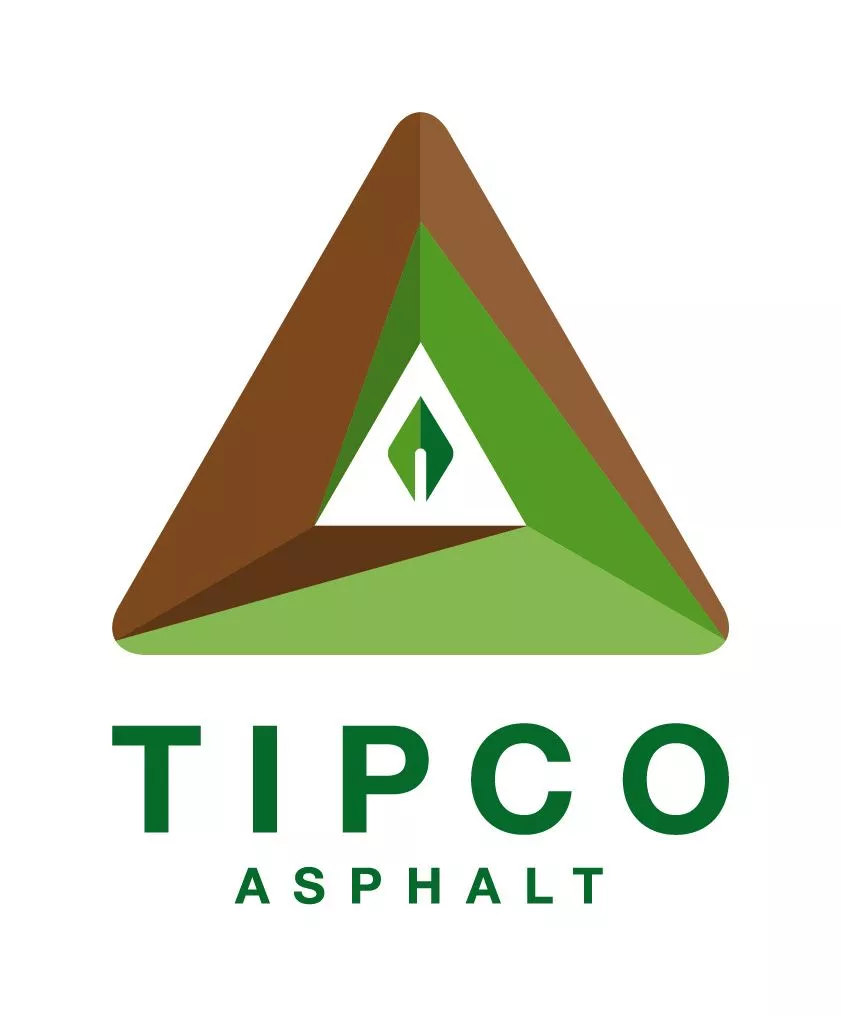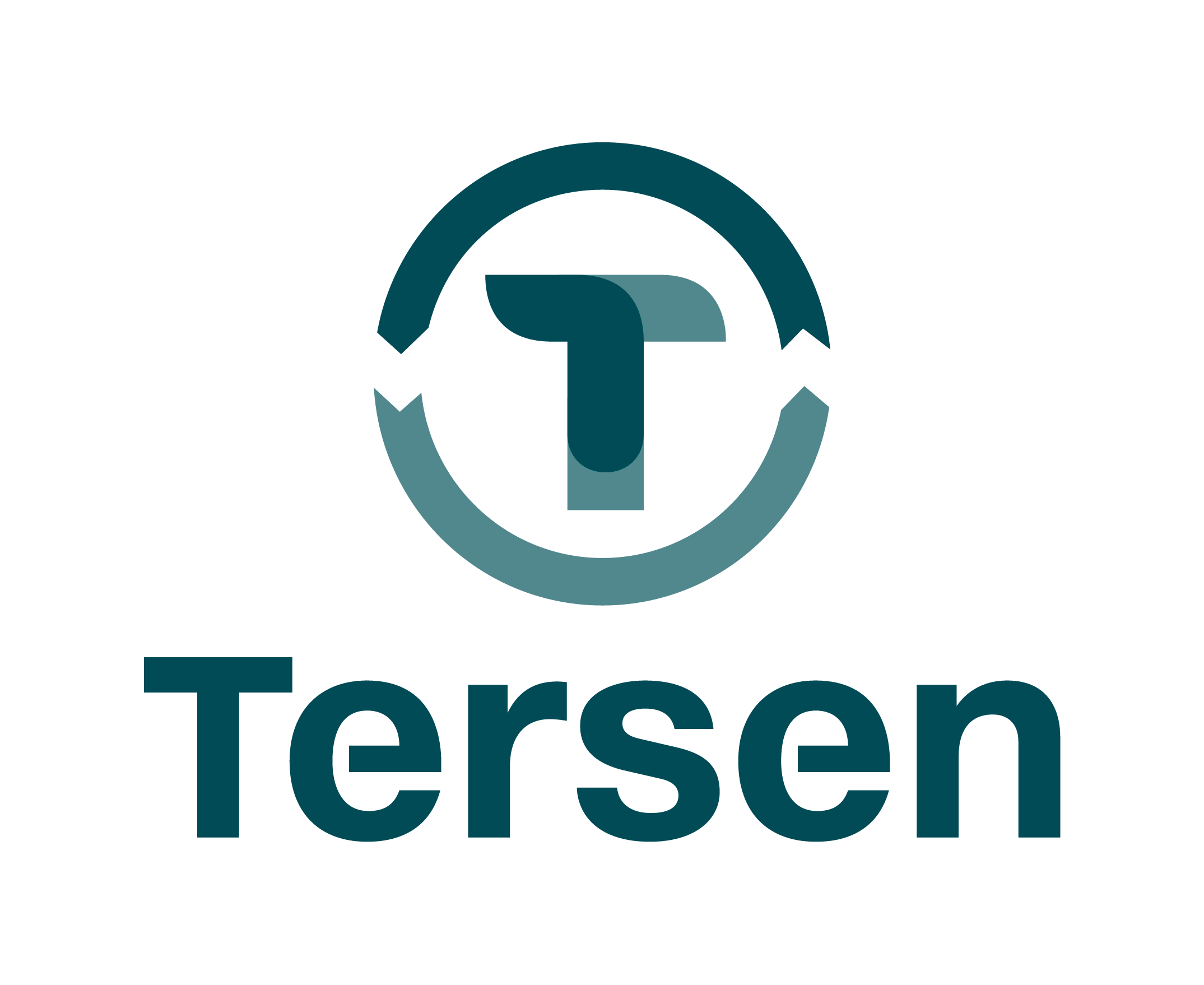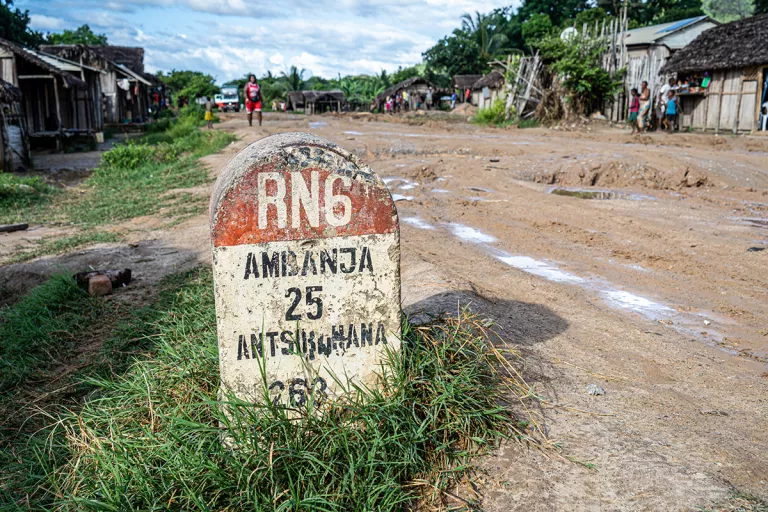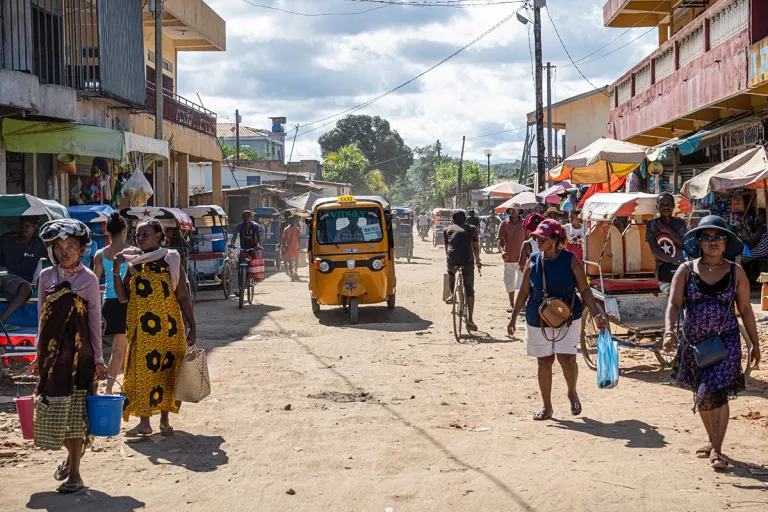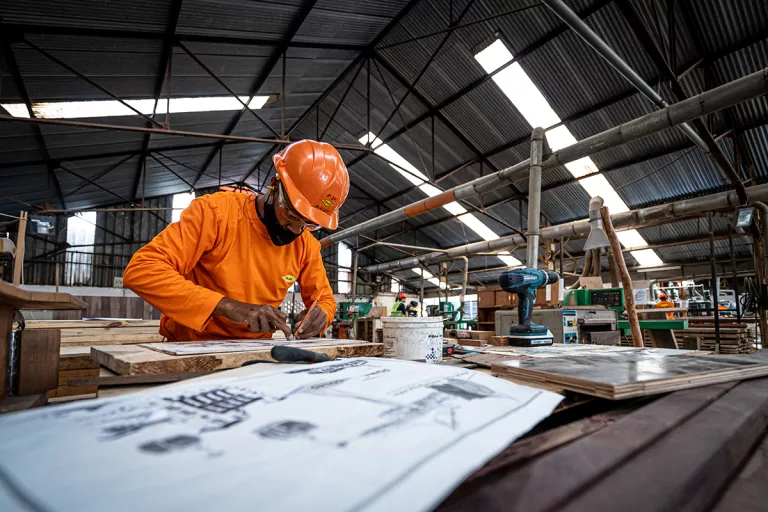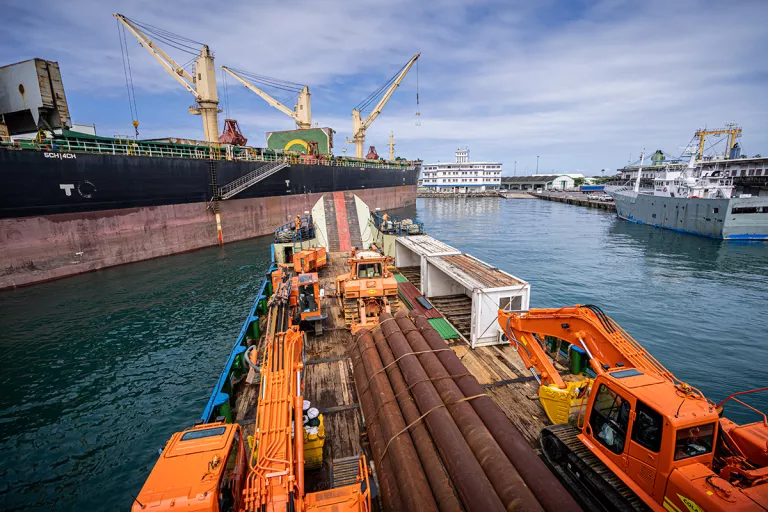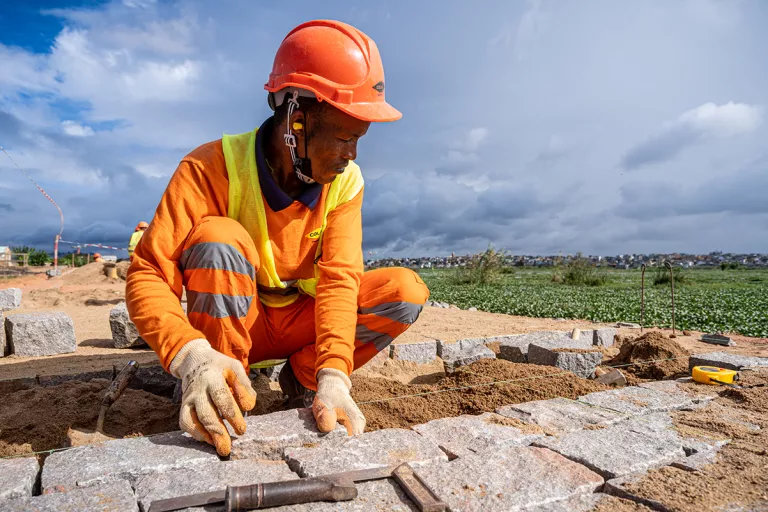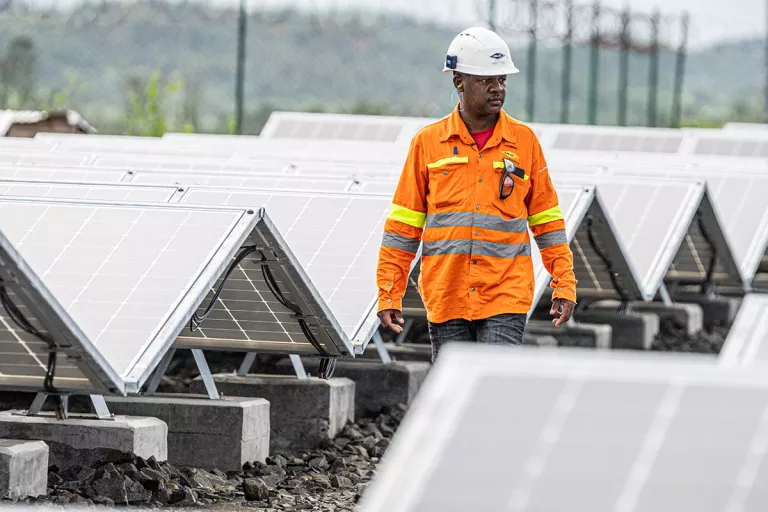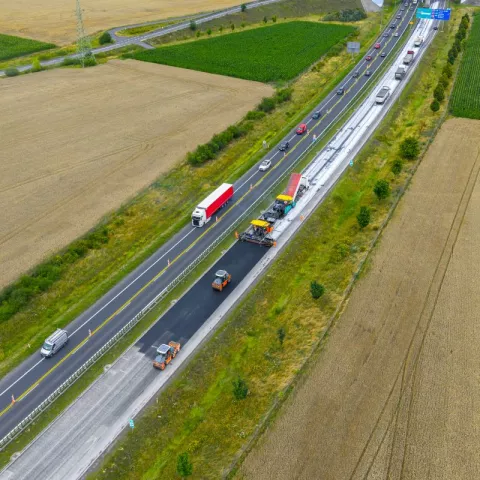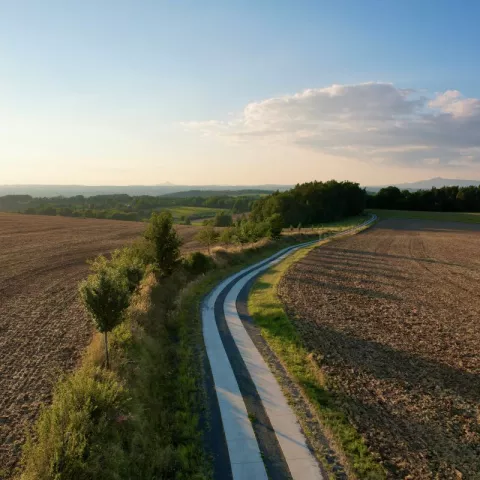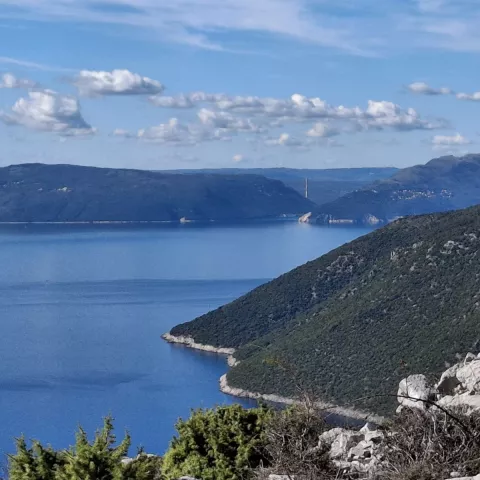Destination Madagascar
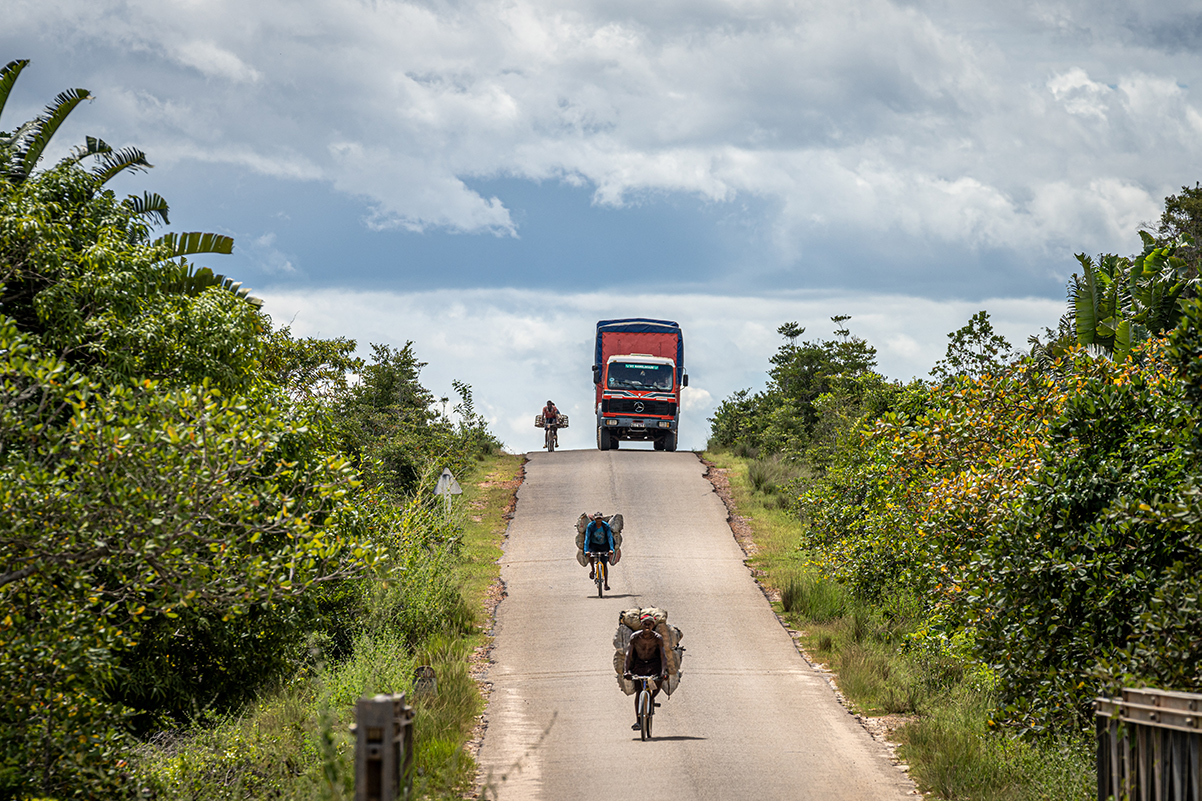
Colas Madagascar has operated on the “Red Island” for almost seventy years. Today, as the country faces the combined challenges of climate change and economic growth, Colas is playing an ever more active role in the country’s sustainable development.
Construction of cable transportation projects in the capital and multistory buildings, supply of rip-rap for the Toamasina port extension, renovation of Route 6 and 13… “Our teams are mobilized across the island on some major projects”, sums up Managing Director, Richard Ferrazi. “It’s proof that the country recognizes our expertise and our sustainable approach to business.” Opening up remote areas, creating jobs, protecting the environment: Colas’ contribution to the development of Madagascar reaches far and wide. For the still mainly rural populations transport infrastructure plays a vital role. But only a fraction of the 30,000 kilometers of roads are paved, and many are in poor condition.
Connecting communities
On Route 6, on the approach to Ambilobe, in northern Madagascar, the line of cars, yellow tuk-tuks and bush taxis grows longer by the minute. A truck has gotten stuck in a rut that is over a meter deep. It’s going to take the best part of an hour, a tow-rope, another truck, backhoes and a dozen volunteers to pull the vehicle out of the mud and help it on its way again. Unfortunately, this is a common problem, with multiple knockon effects. “In the rainy season, the road, which is vital for the cocoa trade and the delivery of produce and dry goods to towns, becomes almost impassable”, explains Balsama Andrianarisoa, Principal Site Manager. He knows the road well: since joining Colas in 1989, he has helped upgrade five different sections. In 2021, supported by Colas Projects, Colas Madagascar won a contract, divided into two sections, to upgrade 232 kilometers of road between Ambanja and Diego-Suarez.
A human and logistics challenge
Since the start of 2022, Colas has been setting up along the Route 6 project and teams have been getting into position in the base camps, workshops, plants and quarries. “The project needs to be completed in less than three years. So, we’ve invested heavily in equipment and we will need everyone to pull together”, underlines Project Manager, Alain Chauvet. At the height of the project, more than 1,000 employees will be mobilized, most of whom are hired locally. The first teams have started preliminary work on the most damaged sections to make it easier to move equipment and materials. Almost all of the machinery has already been shipped via sea barges to where it is required for the Route 6 project - the sea is a quicker and more reliable route than attempting to use the dirt roads that cross the island’s interior. The materials are extracted locally, as close as possible to the project site. Three quarries will supply the materials needed: over 1 million tons.
A sensitive environment
The first crushing facility is located outside the town of Ambilobe, just a few kilometers from the Ankarana national park. This is a protected area that is home to a unique geological formation: the “tsingys” and some of its grey needle-shaped limestone formations can be seen from the quarry. “Route 6 runs through a sensitive environment”, points out Harisoa Ratovonirina, HSE (Health, Safety, Environment) Manager for section 2 of the project. “We’re particularly vigilant when it comes to the short- and long-term impact of our projects and our industries.” The location of quarries and borrow pits was carefully studied and sites will be returned to their original state and replanted once work has been completed. At the permanent facilities, the sustainable approach is further reinforced. One example is the Ambokatra quarry, near Toamasina, on the island’s east coast. Colas, the site operator for a number of years now, installed a solar plant at the start of 2022, with an energy storage system that supplies all of the facility’s needs outside daylight hours - vital for a quarry that operates continuously from 6 o’clock in the morning to 9 o’clock in the evening. The system is expected to reduce CO2 emissions by 90 metric tons per year.
Sustainable development
With 2,800 hours of sunshine per year, Madagascar is ideal for tapping into solar energy. Solar panels are appearing all over the country, where the demand for energy is constantly increasing. This is especially true in the capital city Antananarivo: population growth is high and the city is expanding with the construction of residential and office buildings. Cranes mark the skyline above the business district, which didn’t even exist before the year 2000. Colas Madagascar built the highest tower, with its 30 floors, home to the head office of several major international companies. And the Colas subsidiary’s role in developing the district does not stop there… “Our order book is full for the coming months”, observes Alain Roger, manager of the Buildings center. “The Buildings activity is going strong, and Colas has established its quality and safety methods and standards.” Teams have just delivered the structural work for a future shopping mall, with a faultless track record: zero accidents and right on time!
Mission : Raising awareness
Safety is a priority in the Buildings sector, as it is across all other businesses. The keys to success? Training for employees in supervisory roles and compulsory daily safety briefings conducted in Malagasy, for all teams. “We believe we have a responsibility towards our employees that goes well beyond jobsite safety rules”, notes Benoît Turpain, head of the QHSE (Quality Health Safety Environment) department. A network of doctors employed by Colas look after employees and organize regular awarenessraising initiatives aimed at teams on disease prevention and, more recently, the Covid-19 vaccine. A genuine social player, Colas Madagascar regularly contributes to local programs and initiatives, including the Lemurs’ Park environmental education program. Since 1950, around 45% of the island’s natural forests have disappeared. “We are helping raise awareness about the crucial issue of deforestation. Madagascar’s future depends on it”, concludes Richard Ferrazi.










